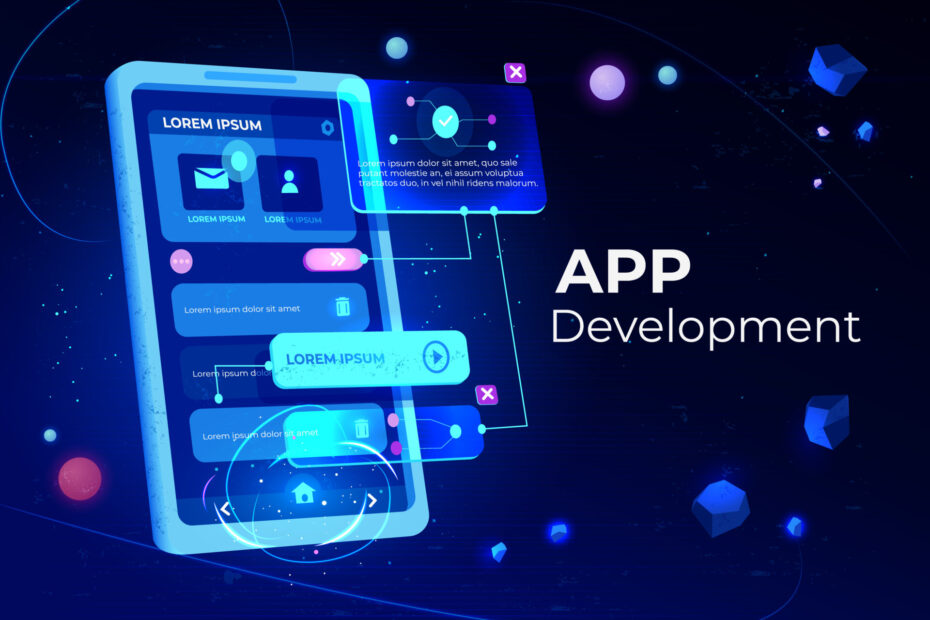Introduction
Our everyday lives are now completely reliant on mobile app development, which has completely changed. The way we interact, work, shop, and pass the time. Mobile applications, which range from social networking apps to e-commerce sites and productivity aids. Have completely changed sectors and given people all over the world unmatched ease. We will go into the intriguing field of mobile app development in this article. Examining its background, present practices, and potential future developments.
The Evolution of Mobile App Development
The development of mobile apps has been an incredible experience. With the opening of the Apple App Store in 2008, developers were able to produce and make their apps available to millions of iPhone users. A new era in technology and entrepreneurship was ushered in by this occasion. Since then, a number of factors have caused mobile app development to substantially change:
- Platforms and Ecosystems: At first, the two main platforms used for app development were iOS and Android. But developers now have more options to select from because of the success of Windows Phone (which is no longer supported) and the growth of substitutes like React Native, Flutter, and Progressive Web Apps (PWAs).
- Tools and Frameworks: The process of creating and testing mobile applications has been made easier by significant advancements in development tools and frameworks. The ability to create code once and run it on numerous platforms has made cross-platform frameworks like Flutter and React Native popular, while IDEs like Xcode for iOS and Android Studio for Android have improved development efficiency.
- User Experience (UX) and Design: User expectations about the usability and design of apps have increased dramatically. These days, flawless user experiences, responsive layouts, and intuitive UI/UX design are essential components of a successful app development process.
Current Trends in Mobile App Development
Several notable factors that impact the market has defined mobile app development in 2023:
- Integration of AI and Machine Learning: It’s becoming more and more popular to include AI and Machine Learning into mobile applications. This makes apps more intelligent and user-friendly by enabling chatbots, personalized recommendations, and improved data analysis.
- Virtual reality (VR) and augmented reality (AR): These technologies are being used in a wide range of fields, including marketing, education, and even gaming and healthcare. Utilizing AR and VR technologies, developers are producing engaging and dynamic mobile experiences.
- Integration of the Internet of Things (IoT): IoT has made it possible for apps to communicate and control with smart appliances and gadgets at a new degree of connectedness. IoT integration is growing, from wearable technologies to smart home apps.
- Cross-Platform Development: Frameworks for cross-platform development, such as Flutter and React Native, are becoming more and more popular because they allow developers to build code that runs on numerous platforms, saving time and resources.
- Security and Privacy: Developers are putting a lot of emphasis on app security as a result of growing worries about data privacy and security breaches. Secure coding techniques, two-factor authentication, and encryption are crucial elements of contemporary mobile app development.
Future Prospects of Mobile App Development
Even more fascinating opportunities await those who design mobile apps in the future:
- 5G Network Connectivity: As 5G networks spread throughout the world, mobile apps will be able to provide reduced latency and higher data transfer speeds, opening the door to real-time applications and more immersive multimedia experiences.
- Edge Computing: This technology will move processing power closer to the consumer, lowering latency and improving app performance. Applications that need real-time data analysis will find this especially crucial.
- IoT and wearables: As these devices become more integrated, consumers will have more control over their networked surroundings thanks to the increased integration of apps.
- Progressive Web Apps (PWAs): PWAs are becoming more and more popular as a more accessible and light-weight option to native apps.
- Sustainability: We may anticipate seeing more eco-friendly app designs and sustainable development techniques in the future as app developers become more aware of environmental issues.
Conclusion
Since its beginning, mobile app development has advanced significantly and is still developing quickly. Technology breakthroughs, changing consumer tastes, and new trends mean that the market for mobile app development is still vibrant and exciting. There are countless chances for innovation and creativity in this subject in the future, which opens up a world of possibilities for both users and developers.
